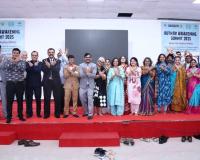From Ancient Oils to Modern Bottles: The Fascinating Evolution of Perfume Through the Ages

The story of perfume is as old as civilization itself, woven through millennia of human culture, spirituality, and artistry. From the sacred incense of ancient temples to the sophisticated fragrances gracing modern vanities, perfume has evolved from a divine offering to a personal statement, reflecting humanity's eternal quest to transcend the ordinary through the power of scent.
This aromatic journey spans cultures and continents, revealing how our relationship with fragrance has shaped—and been shaped by—religious practices, social hierarchies, scientific discoveries, and artistic movements. Each era has contributed unique elements to the complex tapestry of modern perfumery, creating a rich heritage that continues to influence contemporary fragrance creation.
The Sacred Origins: Ancient Civilizations and Divine Fragrances
The earliest recorded use of fragrance dates back to ancient Mesopotamia, where aromatic resins and oils were burned as offerings to the gods. The word "perfume" itself derives from the Latin "per fumum," meaning "through smoke," reflecting these ancient practices. Archaeological evidence from sites like Pyrgos in Cyprus reveals sophisticated perfume-making operations dating back over 4,000 years, complete with distillation apparatus and aromatic material processing facilities.
Ancient Egypt elevated perfumery to an art form, with fragrances playing crucial roles in religious ceremonies, daily life, and preparation for the afterlife. The Egyptians developed sophisticated techniques for extracting essences from flowers, herbs, and spices, creating complex blends that were treasured by pharaohs and commoners alike. Cleopatra's legendary use of rose and jasmine oils demonstrates how fragrance was intertwined with power, seduction, and identity even in antiquity.
The process of creating these ancient fragrances was labor-intensive and required specialized knowledge passed down through generations. Perfumers, known as "unguent makers," held prestigious positions in society, their skills considered both scientific and mystical. They developed techniques for enfleurage, where flower petals were pressed into animal fats to capture their essence, and primitive distillation methods that would later evolve into modern extraction techniques.
Classical Refinement: Greek and Roman Contributions
The Greeks and Romans transformed perfumery from primarily religious practice into a sophisticated element of daily life. Greek philosophers like Theophrastus wrote detailed treatises on scents, classifying different aromatic materials and their properties. The Romans, with their love of luxury and bathing culture, integrated fragrances into their elaborate bath rituals and social customs.
Roman perfumers introduced innovative techniques such as the use of different carriers for fragrances, creating oil-based, water-based, and solid perfumes for various applications. They established the first commercial perfume shops and developed trade routes that brought exotic aromatics from across the empire. The famous Unguentum Regale, a complex blend of over 20 ingredients, demonstrated the sophisticated palate of Roman perfumers and their wealthy clientele.
The Islamic Golden Age: Scientific Revolution in Perfumery
The Islamic world's contributions to perfumery cannot be overstated. During the Islamic Golden Age, scholar-perfumers like Al-Kindi and Jabir ibn Hayyan revolutionized fragrance creation through systematic study and scientific methodology. They developed sophisticated distillation techniques, created the first alcohol-based perfumes, and established principles of fragrance composition that remain relevant today.
Persian perfumers, particularly in cities like Isfahan and Shiraz, became renowned for their expertise with rose cultivation and attar production. The invention of the alembic still allowed for more precise extraction of essential oils, leading to purer, more concentrated fragrances. These innovations spread through trade routes, influencing perfumery practices across Europe and Asia.
Medieval and Renaissance Europe: Fragrance as Status Symbol
Medieval Europe initially viewed perfumes with suspicion, associating them with pagan practices and moral corruption. However, the Crusades and expanding trade brought new aromatic materials and techniques to European courts. By the Renaissance, perfume had become an essential element of aristocratic life, with elaborate fragrances used to mask body odors and display wealth and sophistication.
The city of Grasse in France emerged as a perfumery center during this period, initially due to its leather-working industry. Perfumed gloves became fashionable, leading to the development of local expertise in fragrance creation. Catherine de Medici's court perfumer, René le Florentin, established many traditions that would define French perfumery for centuries to come.
The Industrial Revolution: Mass Production and Democratization
The Industrial Revolution transformed perfumery from an artisanal craft into a modern industry. The invention of steam distillation, the discovery of synthetic aromatic compounds, and improved transportation systems made fragrances more accessible to the growing middle class. Paul Parquet's creation of Fougère Royale in 1882, using synthetic coumarin, marked the beginning of modern perfumery and the possibilities offered by man-made aromatic materials.
This period saw the establishment of major perfume houses that remain influential today. Companies like Guerlain, founded in 1828, began creating fragrances that combined traditional craftsmanship with industrial efficiency. The development of synthetic musks, aldehydes, and other aromatic compounds expanded the perfumer's palette exponentially, allowing for previously impossible olfactory creations.
The 20th Century: Artistic Expression and Marketing Revolution
The 20th century witnessed perfume's transformation into a form of artistic expression and powerful marketing tool. Iconic fragrances like Chanel No. 5, created by Ernest Beaux in 1921, demonstrated how synthetic materials could create entirely new olfactory experiences. The collaboration between fashion houses and perfumers created the concept of signature scents tied to brand identity. This era also saw the emergence of celebrity-endorsed fragrances, with modern examples like SRK perfume demonstrating how star power can elevate fragrance beyond mere commodity to cultural phenomenon.
The post-war period brought increased prosperity and changing social attitudes toward personal grooming and self-expression. Fragrances became more diverse, with distinct categories emerging for different demographics and occasions. The introduction of new synthetic materials like Iso E Super and Ambroxan continued to expand creative possibilities. This diversification paved the way for specialized categories like luxury perfume for men, which addressed the growing sophistication of male consumers and their desire for premium grooming products.
Modern Perfumery: Technology Meets Artistry
Contemporary perfumery represents the culmination of millennia of evolution, combining ancient wisdom with cutting-edge technology. Modern perfumers have access to thousands of aromatic materials, precise analytical instruments, and sophisticated understanding of scent perception. Techniques like gas chromatography allow for the recreation of natural scents and the development of new synthetic materials.
The rise of niche perfumery has created space for artistic expression and unusual olfactory experiences, while mass market brands continue to innovate in accessibility and wearability. Sustainability concerns have led to renewed interest in natural materials and ethical sourcing, creating a bridge between ancient practices and modern consciousness. Contemporary luxury perfume for men reflects this evolution, offering sophisticated compositions that honor traditional craftsmanship while embracing modern sensibilities and values.
The evolution of perfume from ancient sacred oils to modern artistic expressions reflects humanity's enduring fascination with scent and its power to transform experience. Each era has contributed essential elements to the rich tapestry of contemporary perfumery, creating a medium that continues to evolve while honoring its profound historical roots. This journey from ancient temples to modern laboratories demonstrates how fragrance serves as a constant thread connecting us to our shared human heritage and our eternal desire to transcend the ordinary through the transformative power of scent.






